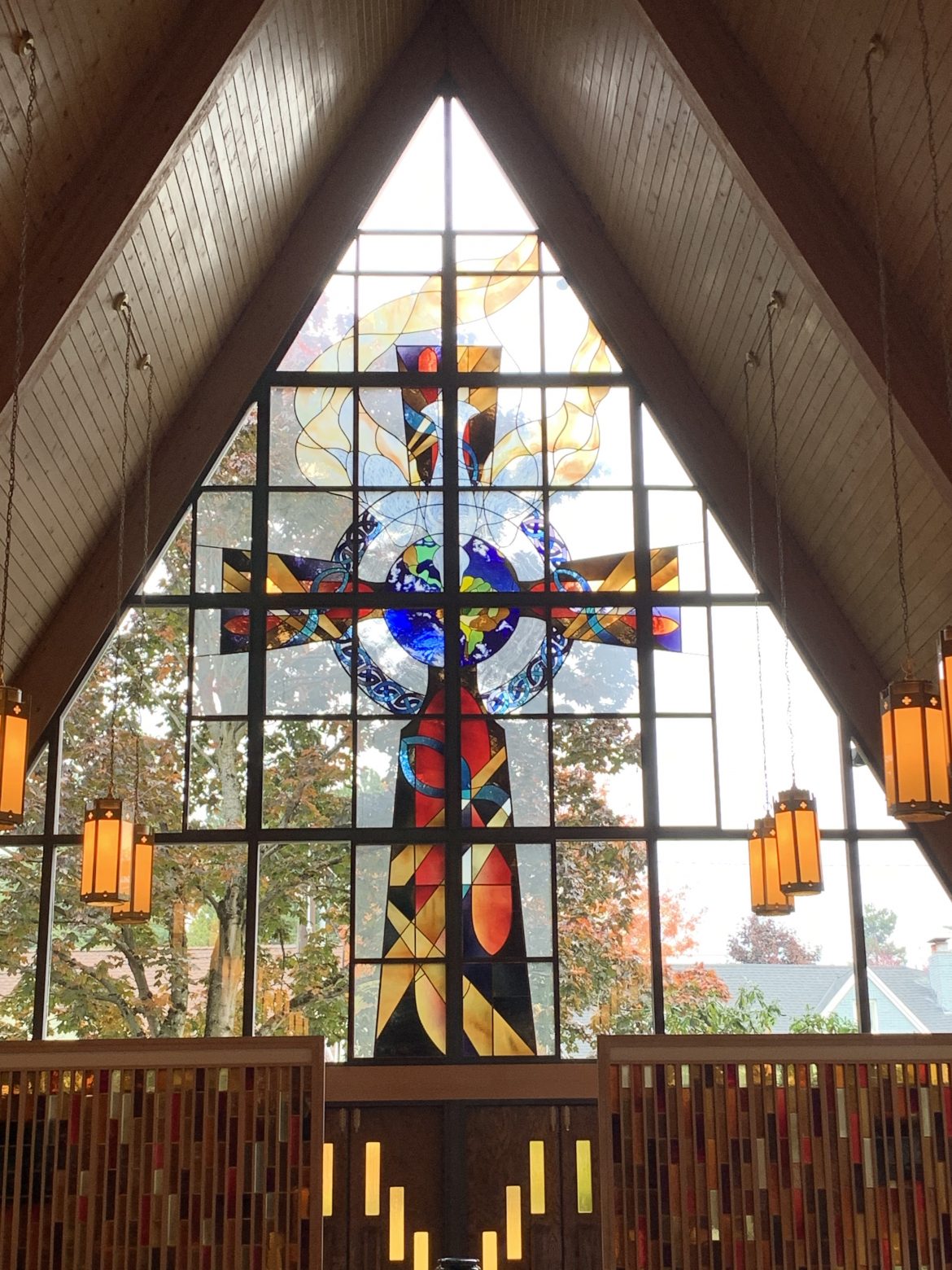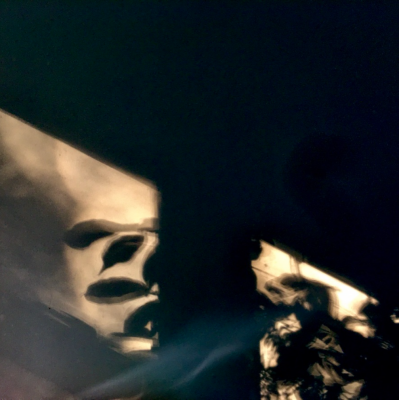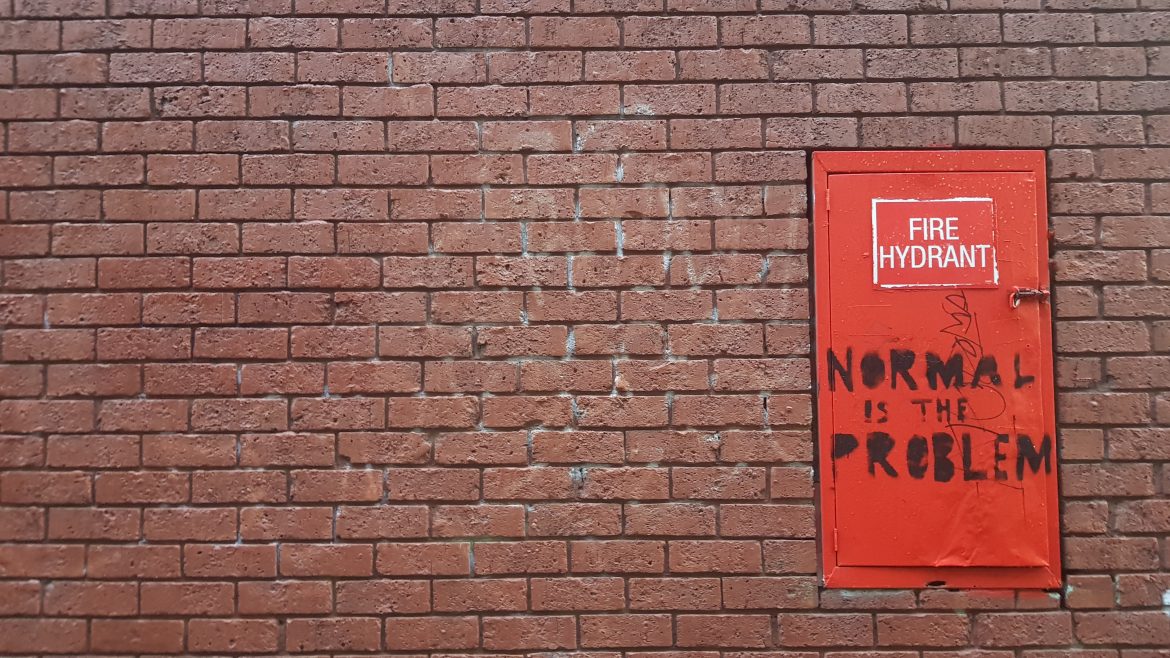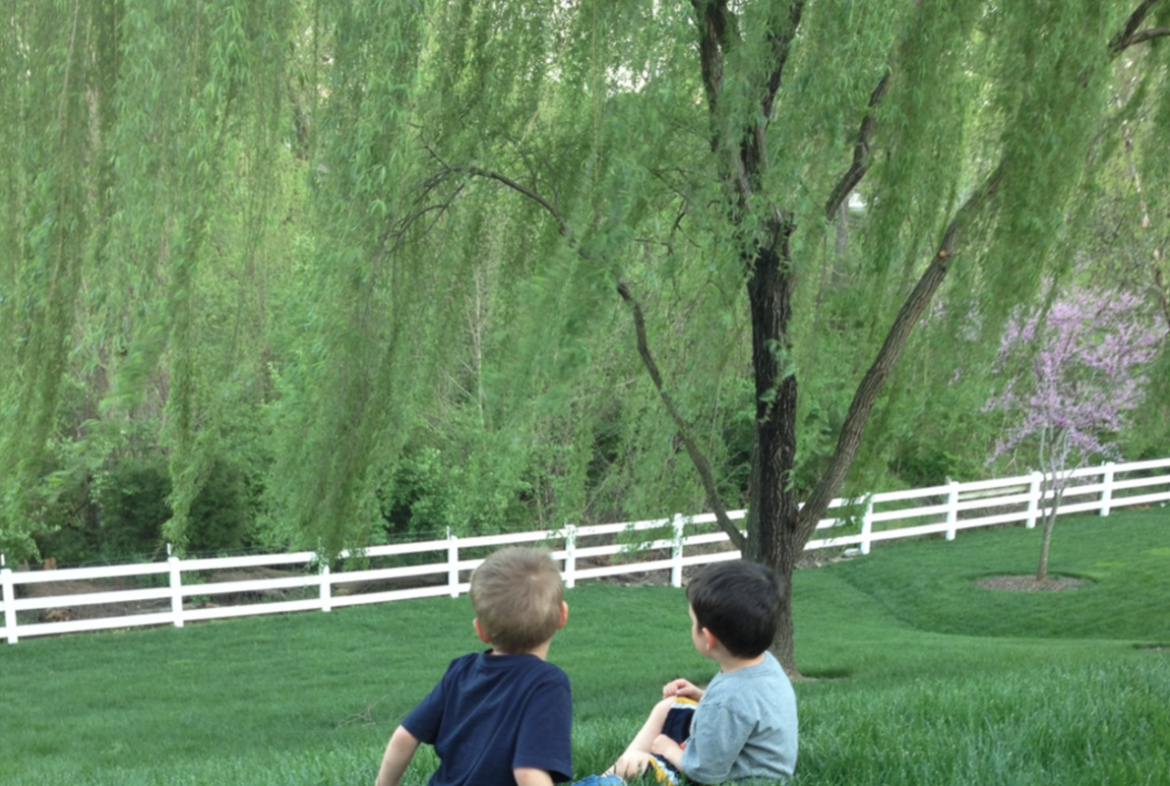by Christine Sine
As we move closer to the festive season this year with a growing number of countries returning to lockdown and those of us in the U.S. struggling with a staggering upsurge in COVID, we all need times of contemplation and reflection to refresh and renew us and bring us peace. This week’s contemplative service from St Andrew’s Episcopal Church in Seattle does that for many of us. I pray you will drink deeply from its waters and allow it to draw you closer to the Eternal One.
A contemplative service with music in the style-of-Taize for the Twenty-Third Sunday after Pentecost. Carrie Grace Littauer, prayer leader, with music by Kester Limner and Andy Myers.
Permission to podcast/stream the music in this service obtained from One License with license #A-710-756 with additional notes below.
“Da Pacem Cordium,” and “Atme in Uns” are songs from the Taize community – copyright and all rights reserved by GIA/Les Presses de Taizé.
“Even in Sorrow” – Composed by Kester Limner in March 2020 for the people of St. Andrew’s Episcopal Church in Seattle, shared under the Creative Commons License, Attribution (CC-BY).
“Kyrie for November 8, 2020” – Text and music by Kester Limner, shared under the Creative Commons
License, Attribution (CC-BY).
“His Eye is on the Sparrow” – is a public domain hymn written in 1905 by Civilla D. Martin and Charles H. Gabriel.
by Kate Kennington Steer, all images by Kate Kennington Steer
I find it difficult to comprehend where my time between the Autumn Equinox and Samhain (the Celtic festival for this cross-quarter day on November 7th) has disappeared to. I cannot remember even using it in any meaningful way. It is a strange time where dates and days of the week mean little to me on a daily basis. Perhaps that explains why I am so interested in following the light this year, marking my seasonal pilgrimage through the year, even if light can be such an unstable, insubstantial element in which to anchor myself.
Samhain brings a ‘certain slant of light’ which is an invitation from the ‘thin’ places: a festival to mark the beginning of the ‘season of dark’, the ending of the ‘season of light’ (the two halves of the Celtic year). Such an invitation explicitly confronts my modern fears about the nature of darkness, and the way my mind, body and spirit react to such shifts in the light with ‘seasonal affected disorder’ (SAD). In the northern hemisphere, Samhain brings the invitation to welcome the coming dark days as rest time, pause time, recovery time, planning time. Samhain celebrates such a movement in tones of light: from the warm, ‘hot’ colours of Summer, through the golds of Autumn, to the cooler shades of Winter, where blues and greys can dominate.
So Samhain is another ‘hinge’ point in my year, and one my Celt ancestors might have described in terms of a ‘threshold’. Those same Celt ancestors used Samhain as the opportunity in the year where they could deliberately recommit themselves to celebrating their own ancestors by remembering them, bringing their influence back into the present moment, and listening again for whatever wisdom the elders may have had for their present time and space. In my family, November marks the death of a great-grandmother and grandmother and the birthday of a deceased grandfather, so sorrow is never far from my thoughts at this time, though deep gratitude for their lives and the love they showed me is also not far from my surface.
It is no accident that the Anglican Church marks November as a ‘memorial for the dead’ month. It begins with the feasts of All Souls and All Saints, encompassing the twentieth-century moment of Remembrance Day on the 11th November, and lasts until the Church year comes to an end again with the feast of Christ the King the week before Advent begins. Other religions too mark this month with a variety of ‘festivals of light’, and it seems to be a repeated cultural and spiritual theme that this time is an acknowledgement that one cannot have day without night, dawn without dusk, sun without moon, light without shadow, and that winding throughout all our stories our ancestors played their part, for good and ill.
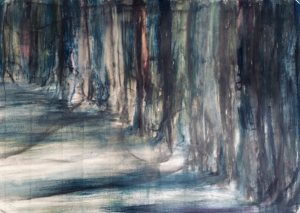 So Samhain is a tipping point towards the dark. And this year, with waves of Covid-19 besetting our world, the threat to our mortality seems rather more present. Many have suffered the loss of loved ones, and in so many cases these died tragically isolated. Many have been overwhelmed by caring for the sick, in homes or in hospitals, battered by dealing with death in far greater frequency than normal. Even those who, like me, have learned the new term ‘shielding’, are not immune to the social zeitgeist of anxiety that permeates every news bulletin and often, every conversation.
So Samhain is a tipping point towards the dark. And this year, with waves of Covid-19 besetting our world, the threat to our mortality seems rather more present. Many have suffered the loss of loved ones, and in so many cases these died tragically isolated. Many have been overwhelmed by caring for the sick, in homes or in hospitals, battered by dealing with death in far greater frequency than normal. Even those who, like me, have learned the new term ‘shielding’, are not immune to the social zeitgeist of anxiety that permeates every news bulletin and often, every conversation.
So perhaps this year, I am being exposed to fear in a wider way than I have previously experienced. Ways forward into this Winter can at best only be tentative, when the coming of another period of ‘local lockdown’ seems increasingly likely and routines I have learnt in the last few months, will have to make way once again. In this unsettled, temporary rootlessness, the path into Winter already seems misty, murky and full of mystery. I recently read this deceptively simple description of mist in Garden of God’s Heart by Keren Dibbens-Wyatt, which seems to encapsulate so many nuanced images about the transitions between light and dark, between Autumn and Winter, between past, present and future:
Cloud covering the ground, sky descended, clumping in icy giant breaths across the garden. Laying low like a fugitive fog. Will you disperse gently, leaving a stratum of honeydew manna? Or just deposit damp droplets as you disappear?
Vanishing vapour, wisps of winter starting to enter the world, the heaviness of cold bursting onto the scene, touching the last vestiges of autumn unannounced and somewhat unwelcome after a lulling of milder golden days. A mantle of mist, a shrouding of mystery that will perhaps teach us about spiritual secrets and the patience we need to wait for clarity. (214)
In my search for such clarity, I have found myself returning to a favourite source of wisdom, Learning to walk in the dark by Barbara Brown Taylor, and I remember one salient point: that darkness is not dark to God. So, if I ask for the grace of eyes to see, the eyes of my heart might glimpse, recognise, embrace the light in dark; I might enter the mystery of one eternal paradox: this darkness is light, just as this light is dark.
It is so easy to be afraid of the coming darkness, a very real external reflection of feelings which can dominate inside me. I used to wake every morning saying ‘I don’t want to live this day’. Even whilst still a young woman, I insisted to my family and doctors that I wanted a DNR notice on record in case of accident, knowing as I did so that inside I was battling with waves of suicidal thoughts. Now at least I know to listen for The Invitation who whispers ‘enter this day, K’, even though there are still many days I feel it is impossible to respond. Yet the miracle of the seasons turning in my own spiritual life is that there are at least some mornings when I can wake to greet, welcome and surrender to the gift of the new day. On these days I can pray more easily the opening lines of Thomas Keating’s ‘Centering Prayer’ that I say almost daily: ‘I welcome everything this day brings, since I know all is for my healing’.
 As I wrote at the Autumn Equinox, do I want to live a fear-filled life or a creativity-filled life? This still such a ‘live’ question for me. The creativity-filled life I long for invites me to root myself in my present, paying attention to what is within and without me, getting curious about how the synchronicities of life my be showing me a new path of being, signposting the way to go for my healing. So the invitation of this Samhain for me is to garner the courage to just wait and sit in the mess of my present uncertainties. To pause before I try to fix. To clear a space so I might hear what those who have gone before me want to say to me, (whether they died recently or long ago, whether known to me personally or not). To listen to the wisdom they offer. To see what rich treasure they have found in their own dark. To follow their guiding as to where I too may find what I need for this coming moment, day and season.
As I wrote at the Autumn Equinox, do I want to live a fear-filled life or a creativity-filled life? This still such a ‘live’ question for me. The creativity-filled life I long for invites me to root myself in my present, paying attention to what is within and without me, getting curious about how the synchronicities of life my be showing me a new path of being, signposting the way to go for my healing. So the invitation of this Samhain for me is to garner the courage to just wait and sit in the mess of my present uncertainties. To pause before I try to fix. To clear a space so I might hear what those who have gone before me want to say to me, (whether they died recently or long ago, whether known to me personally or not). To listen to the wisdom they offer. To see what rich treasure they have found in their own dark. To follow their guiding as to where I too may find what I need for this coming moment, day and season.
“People who have come to know the joy of God do not deny the darkness, but they choose not to live in it. They claim that the light that shines in the darkness can be trusted more than the darkness itself and that a little bit of light can dispel a lot of darkness. They point each other to flashes of light here and there, and remind each other that they reveal the hidden but real presence of God. They discover that there are people who heal each other’s wounds, forgive each other’s offenses, share their possessions, foster the spirit of community, celebrate the gifts they have received, and live in constant anticipation of the full manifestation of God’s glory.” HENRI NOUWEN
Where have you seen the LIGHT this week? Take a few minutes and think about this.
Where have you been blind to the LIGHT? How have you gotten sucked into the darkness? Talk to Jesus about this and ask him for forgiveness and new sight!
Where have you seen the LIGHT dispel the darkness?
How do you need to receive more of the JOY OF GOD? What can you do today to experience JOY? What do you need to stop doing in order to be more joy-filled?
Who is pointing you to flashes of light in these crazy days? Thank Jesus for them.
How can you bring more LIGHT to your family, roommates, neighborhood in the days ahead? Ask Jesus to show you and help you!
ACTION:
READ Psalm 34 and Matthew 5:1-12 each day this week. Allow the words to bring you LIGHT, PEACE and HEALING.
Pray for your country, each day this week. Pray for peace and justice and “our better angels” to prevail.
LIGHT A CANDLE or use your flashlight as a reminder that God’s LIGHT is brighter than the darkness. SHINE the flashlight on a map of your country or your city and pray for God’s LIGHT TO SHINE and BE SEEN there.
READ 1 John 3:1-3. What helps you remember that you are totally loved by Jesus and you are a child of God?
How can you see other people as God’s children today? How can you share more of God’s LOVE AND LIGHT even to those who disagree with you or think differently than you do?
TAKE TIME TO REST! This is an exhausting season! And if you are living in America, the waiting on the election results has added to the exhaustion and anxiety! We all need REST and time to restore our souls, time to recover from the trauma and the drama we are all living in. MAKE time to REST this weekend.
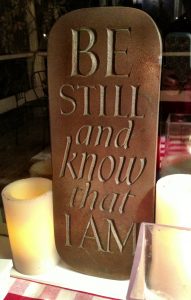
BE STILL and KNOW
CLOSING PRAYER
Lord!
Give us grace today to love as you love. Help us to love with extravagance.
Give us hope today for ourselves and others. Heal our hurts and our hearts today,
So we can serve and help those around us. Help us to know that you are enough.
And help us live today and everyday in thankfulness. For all you’ve done and for all you bless us with.
In the Name of the Father, the Son, and the Holy Spirit. AMEN.
We are elated to announce that the Lean Towards the Light Advent Retreat Online experience is ready and available! Thank you to those that have pre-ordered and for those that emailed us with your interest before the retreat was ready. For $39.99, this retreat includes 90 days of access to progress through the material as you would like, though we recommend one module a week in keeping with the layout of Advent.
For more details about this retreat experience, click the product page below!
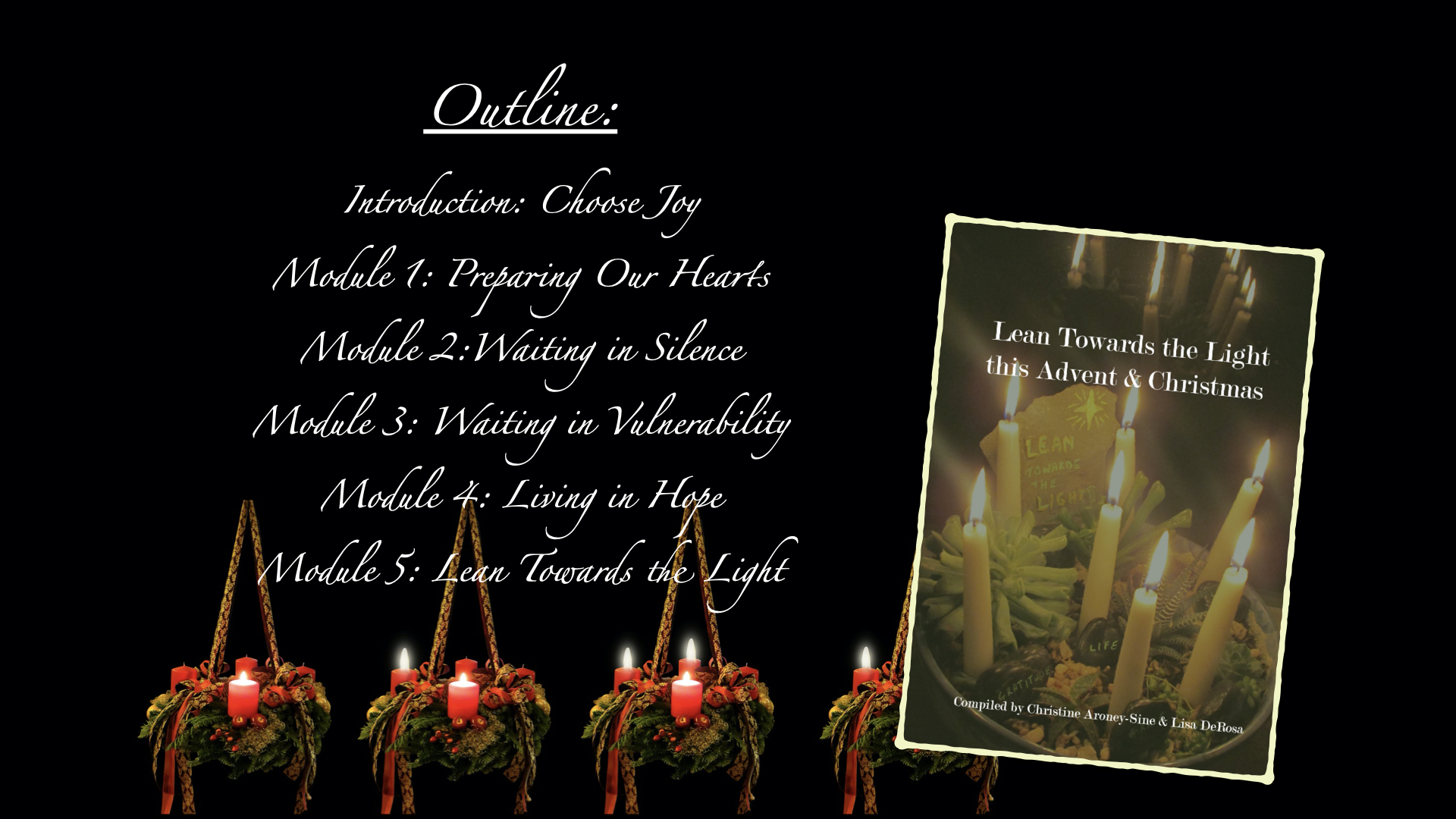
In Melbourne, Australia, we are several months into our second lockdown, in this piece I explore the potential of seeing this COVID-impacted season as one of pilgrimage – those journeys never seem to take you where you think you’ll go… that pretty much sums up 2020. How are you travelling on the path to the “new normal”?
I listen to people talk about a “new normal”. I hear it as something ‘out there’ and I wonder, “Who’s making it? Who’s working on building the new normal?”
Sometimes I catch up with friends (over zoom or for a socially distanced walk) and they’ve discovered something wonderful in this season and they ask: “What can I do to keep this? How can I keep living my life with this in it once things go back to normal?”. There is that word again. Normal. This idea that normal is something that happens outside of us and is controlled by forces outside of us. But what we’re really talking about is life, or culture, and culture is made up of ‘the values, beliefs, underlying assumptions, attitudes, and behaviors shared by a group of people’. How and why is lockdown having an impact on these?
In trying to come up with a parallel for this lockdown experience, I started thinking about the idea of pilgrimage. Pilgrimage is a conscious stepping aside from life as normal in order to explore and experience a totally new environment such as: a journey to the Red Centre, walking the El Camino or doing an internship, or taking a sabbatical often for a time of discernment or at a time of transition such as a relationship or job ending. Anyone who has had experiences of this kind will know that it is not the destination that teaches us something, but rather what we learn along the way as we are taking the journey.
We have not been able to choose to take this pilgrimage, but regardless there are similarities: We have needed to let go of the ‘way things have always been’ and consider what else they might be. The routines aren’t there, the busyness, the commuting, the activities and events that take up our time… the bustle of life has slowed because we cannot travel more than 5kms and need to be home before a curfew. There is an invitation here to consider, what is essential to us? What can we survive well without or even is a relief to stop? Unbidden, we are being asked to reconsider, “What are my values, beliefs, assumptions…”?
Here’s what can happen on a pilgrimage: when you sit with a empty horizon before you and allow the land to speak to you, you will discover how full it is; or when you walk (and walk and walk) and hold silence within yourself knowing yourself to be walking where many others have walked, and will walk again, you can identify both as singular and part of the collective of all of humanity; or when you visit a new country and experience being the person who doesn’t know the language, the food, courtesies, jokes or the slang and might know for the first time that you can be the ‘other’ too… it’s not the place we go that changes, or the places we come back to – but us. I don’t know that change is the right word for this because, really, it’s remembering, and re-membering. A coming back to the wholeness of who we feel called to be, and how we can be – and become – that which we lost sight of somehow.
Here’s what can happen on a pilgrimage: when you walk in your neighbourhood, you meet and get to know your own neighbours, discover a little library, a lovely garden, a cute letterbox – familiar and new as if you were trying to memorise the face of a loved one before you lose them, suddenly there are details you never saw before and they are precious; or when you are removed from friends, family and the usual social circles, you paint a spoon for Spoonville, put a teddy bear in the window, and leave groceries at the free pantry. Learning without words, without touch, without ever meeting, I can connect with someone and that can be profoundly meaningful; or when you are stuck with someone, or stuck apart, stuck in a job you need or stuck on a job you love and can’t go to right now, you recognise the fragility of life and how important it is to do what you love with the people you love best and who love you well – what will it cost you to have that? What is it worth to have that?
This seems the spot where you might easily drop T.S. Eliot’s ‘the end of all our exploring will be to arrive where we started and know the place for the first time’. T.S. Eliot wrote these Four Quartets during World War II and the air-raids on Great Britain. It is good to remember that these times ARE precedented. Pandemics have ravaged with worldwide impact before, as disease arrived on cruise ships, so too, it came with the First Fleet. People have lived through experiences wondering if the world would ever be the same again, wondering whether a safe world would exist for their children to grow up in. It is this line from Eliot that drew me today:
“last year’s words belong to last year’s language
And next year’s words await another voice.”
The new normal belongs to you.
It is yours to discover. It is yours to remember.
I invite you to gently and creatively engage with any/all of these questions through journaling, a vision board, mind map, or other mindfulness practice you enjoy, as you make your way onwards.
Reflection questions:
- Is there anything you have discovered a lockdown love for? Make a list… what did this teach you about yourself you didn’t know before? What needs did these meet?
- Make a list of things you have felt you’ve missed or lost in lockdown. What do you value about them?
- Are there things that you haven’t missed? What has putting these down, freed up capacity for?
Land, family, law, ceremony and language are five key interconnected elements of Indigenous culture – how have the interventions and new laws of the lockdown impacted how these elements in your life have looked over the past few months? Was there somewhere outside your 5kms you longed for? How were rituals different, such as birthdays, weddings or funerals? Have you been using Zoom, Google Hangouts, Discord… or silenced by in accessibility of software or skills?
Has this time brought up things from the past that have been painful or difficult? Honour that. Celebrate what you know about survival. Consider doing a compare and contrast of then and now as a way of seeing how far you’ve come and how much resiliency you have learned. If someone was absent – who is present? If someone harmed – who is healing?
Has this time brought attention to or caused areas of your life to become painful or difficult? Honour that. What is this telling you about what’s important to you? One way to enter into this conversation might be to map What Is/What Could Be. Know you are worthy of dignity and respect and a life that fulfills you and brings you joy. Are there any steps, however small, that might create movement between what is and what could be? Take them.
Did you take up new, or see changes in, the roles and relationships you have through COVID? As teacher, partner, parent, friend… acknowledge these shifts. What can you appreciate about them?
————————-
Photo by Talitha Fraser
by Sue Duby
Finding a home was hard. Not just hard… impossible. We’d moved from a tiny town in East Texas where houses rarely sold quickly and prices seemed so low as “not to be imagined” in any other part of the country. Nashville decided to boom, drawing folks from California with real estate cash offers. Nissan and other companies marked this as the spot to move their headquarter operations.
Driving around for days, we knew we wanted a backyard of refuge. A place to refuel. A place to find quiet, contemplative moments. A place to see green, not the neighbor’s kitchen windows. A place to sip our morning coffee and star gaze at night. A dream, but an important one for us.
Just when every potential house sold before we could even have a second thought and be equally, impossibly out of our price range, a listing popped up. I looked at Chuck with a sigh. “I don’t know about the house, but we should probably just check out the neighborhood anyway”. He returned a sigh in agreement.
As our realtor opened the front door, we stepped across the threshold, looked at teach other and gasped, “I think this is it!”. Without a further step, we could see right through the house to huge windows, framing an expanse of green. Within eight hours, the deal was sealed.
Our patio view included a crazy stretch of lawn… ours merged with six neighbors’ since none of us had fences. Each of those lawns rolled down the hillside to a bright white fence bordering ten acres of forest.
Halfway down the hill stood The Willow. A huge billowing mass of waving fronds of green, draped like an umbrella around the trunk and branches. Children loved to park underneath, as if it was a magical hideout. Gentle breezes caused branches to sway in a near hypnotizing motion… calming and beautiful. So many evenings we’d comment, “If we ever lose our willow, we’ll be so very sad!!!”.
As year eight passed, we began to notice some dead branches. Chuck sawed a few off. Year nine, bigger branches turned brown. Then, a neighbor offered to trim more, but said to Chuck, “You know, the tree really needs to just come down”. Chuck called me at work to ask for my decision. I groaned, then gave permission. We laughed in the midst of sadness, knowing an era was over. Down The Willow came, leaving only the remnant of a small stump on the hillside. Neighbors carted off the branches for firewood and suddenly it was finished… all gone.
After work, we headed out to the patio to sit… and look… and ponder… and be still. I broke the silence. “You know, it actually looks nice. Our yard looks huge. The big river birch next door is so tall and I never knew! Now it has room to fill out even more.” We stared at the woods. “I never noticed that hole in the tree line where the sky peeks through… so beautiful!” Within minutes, we sighed in agreement. “This is good, really good”.
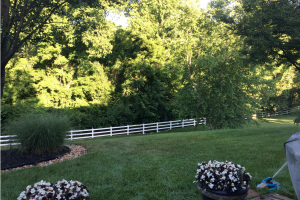
Later that night as I pondered, I knew God was nudging me about The Willow. The old, safe, familiar is so very comfortable. It’s known. It seems to fit. It just “is”. It doesn’t require adjusting. The new is just that… new, unfamiliar, uncertain, surprising and definitely not known.
In chopping The Willow down, we feared what we’d find. A distasteful view from the patio. A sorrowful reminder of what “was”, but what “was no more”. Disappointment in our decision. Wondering if things could ever be as “good” as they were with The Willow standing tall. It took a step of faith, trusting that chopping was the best thing. Circumstances lined up… Chuck had a morning free, our neighbor offered his skill (for free), our other neighbor had been looking for free wood. Still, we hesitated.
How often, O Lord, do you set a decision before us? You give some information… enough to ponder, not quite enough to be “sure” on our own without trusting You for the bigger picture. Then You wait for us to act, without us knowing how things will really turn out… a bit scared, maybe a lot scared… yet choosing to trust You. Often those decisions involve letting go of the “old” to make room for the “new”. Somehow, You rarely allow us to have both… to hold on to what we’ve had AND grab on to what You’ve planned ahead. It’s all a lot of trusting and believing that You do in fact know what You are doing in our lives!
We missed The Willow, but the new view was so very amazing! Open, majestic and fresh. We began to say often, “Why didn’t we chop it down sooner???”. May The Willow be our constant reminder to boldly dare to trust that You have something better beyond the old tree trunk.
———————————————-
All photos by Sue Duby, used with permission
by Carol Dixon
As England and many other places around the world are facing a resurgence of Coronavirus and go into stricter lockdowns, I found Psalm 27 (a Psalm of praise!) a real help to learn to ‘wait on the Lord and rest in his strength’ bringing a sense of peace amid the turmoil which seems to be particularly prevalent just now.
Psalm 27 – a prayer of praise by David is very encouraging during these times.
1 The Lord is my light and my salvation
– whom shall I fear?
The Lord is the stronghold of my life
– of whom shall I be afraid?
3 Though an army besiege me,
my heart will not fear;
though war break out against me,
even then I will be confident.
4 One thing I ask from the Lord,
this only do I seek:
that I may dwell in the presence of the Lord
all the days of my life,
to gaze on the beauty of the Lord
and to seek him in his temple.
5 For in the day of trouble
he will keep me safe;
14 Wait for the Lord;
be strong and take heart;
his power shall strengthen you,
his love increase your joy,
his mercy will lengthen your days;
The Lord will give you peace.
The Lord will give you peace.
Reflection on Peace (by an unknown Christian writer)
In our ordinary lives it is important from time to time to sit with God in silence, to rest in the Lord. This state of being quiet before God suggests complete confidence and ease at being in the presence of God. In our society we are so used to striving for things, to owning things, to earning the approval of others, that it is very hard to think of ourselves as usefully employed if we are just ‘being’, resting in God. What those of us who try to tread this pilgrimage of peace must always remember is that just being in God’s presence is all-sufficient. When we are wholly present to God, we are wholly present to ourselves and wholly present to the whole of creation.
Yet those who abide in the peace of the Lord aren’t always called to be ‘at rest’. At times, it is true, it is necessary – if not vital – for our well being to withdraw from the world and wait quietly with God, resting our bodies, stilling our minds, and renewing our souls in order to restore our equilibrium in life. But the peace Jesus gives – his parting gift to his disciples – is a different kind of peace. The kind of peace Jesus himself had, as he was being manhandled by the soldiers propelling him to his death; the peace he retained when he was being shouted at and abused by the Jewish authorities at the mockery of his trial, and bruised and battered by the Romans taking out all their frustrations on this one Man for the years of unsuccessfully trying to control a recalcitrant nation. It is the peace Jesus had before Pilate, during his flogging and subsequent cruel crucifixion. It is the peace of God beyond our understanding, a gift of the Spirit (for all who love the Lord) that will carry us through whatever life flings at us – peace in the midst of war, hatred from afar or conflict at home; peace in the trials of illness, invasive investigations, or surgery; peace in times of loneliness, grief or desolation; the peace we receive from the scarred hands of Jesus himself. It is the peace the world cannot give, the gift of heaven on earth.
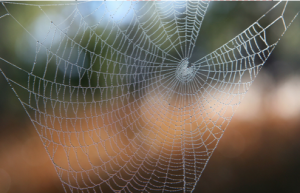
Peace Prayer (by Revd Kate Compston)
Peace is like gossamer – vulnerable, yet indestructible:
tear it, and it will be rewoven.
Peace does not despair.
Begin to weave a web of peace:
Start in the centre and make peace with yourself
and your God.
Take the thread outwards
and build peace within your family,
your community
and in the circle of those you find it hard to like.
Then stretch your concern into all the world.
Weave a web of peace and do not despair.
Love is the warp in the fabric of life:
truth is the weft:
care and integrity together – vulnerable,
but ultimately indestructible.
Together, they spell Peace.
Some Further Thoughts on Peace
The Peace Plough, a mile or so from Flodden Field at Crookham United Reformed Church, is a Peace Garden which was dedicated in 2013 to commemorate the 500th anniversary of the battle of Flodden between the Scots and English. The garden was designed by a borderer, Dougie James of Galashiels who described it like this: “The peace garden progresses from a mood of anger, fear, and repression represented in the first black section, through to a space of conflict and confrontation in the red section, to loss and coldness in the grey garden, then to forgiveness in the white and gold space, and finally to the garden of renewal. Visitors will be given a guided tour through the whole garden which is in the shape of a horseshoe, moving from the dark spiky plants of the conflict zone to the rich colours and small pool in the reconciliation area.”
The peace plough (from St Cuthbert’s Centre, Holy Island) made by Susan Andrews of Garstang is constructed from decommissioned guns, grenades and ammunition with vine leaves sprouting from barbed wire. It is hoped that the garden and the peace centre in the church will provide a quiet place for people to relax, reflect and let go of everyday stresses, and that it will particularly help those dealing with conflict, war or confusion in their lives, offering them some thought-space and perhaps a sense of closure and peace.

Peace to you
Peace to you
and every good that life can bring;
Evening’s song
is calling us to wonder.
The night has come
and all is quiet now
to end the day in listening.
Shadows fall
and linger long till morning;
In life’s hand
today becomes a memory.
Look up and see
the vast and endless sky,
who knows how far and wide
the stars intensely shine.
Calm again
are hearts so weary from the day;
life gives peace,
and peace will bring the morning’s song,
and peace will bring the morning’s song.
©(Monks of Weston Priory, USA)
“Peace to You”, sung by Carol Dixon
Feature photo of Peace Rose © Christine Sine
As an Amazon Associate, I receive a small amount for purchases made through appropriate links.
Thank you for supporting Godspace in this way.
When referencing or quoting Godspace Light, please be sure to include the Author (Christine Sine unless otherwise noted), the Title of the article or resource, the Source link where appropriate, and ©Godspacelight.com. Thank you!

